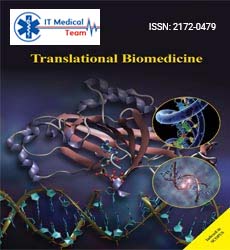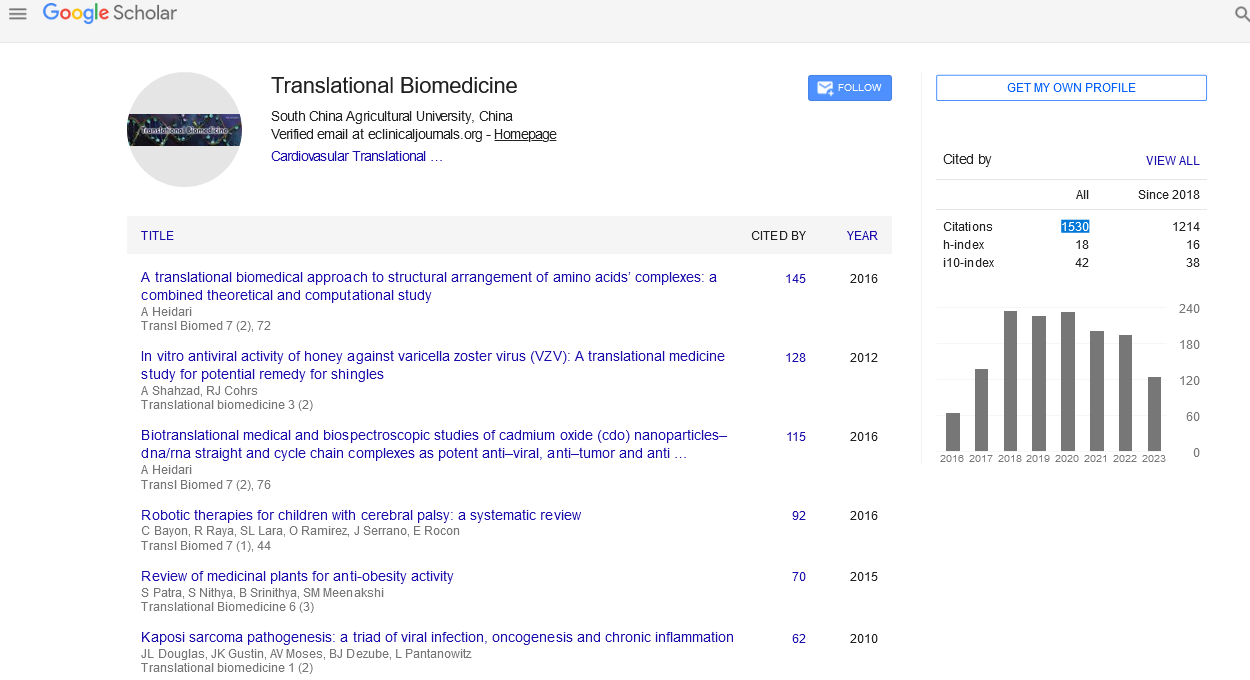Keywords
Lung; Cancer; Cell lines; Anomalies; Discovery; Target therapy
Introduction
The functional morphology of lymph nodes can be traced with the footprints of the lung cancer cell (LCC) [1]. Therefore, what can their footprints in the circulating blood trace? LCCs entering the blood stream have optimum opportunities for distant dissemination. This is because they always have direct access to the pulmonary veins [2]. From these veins, they enter the left atrium and ventricle as well as the aorta whose branches feed every living tissue.
Like other authors, owing to expectations from such an enabling environment, Bryson [3] concluded that “blood-borne dissemination is the rule.” However, he acknowledged that “the distribution is often somewhat anomalous.”
Anomalous patterns
Anomalous distributions merit scientific investigation. Thus, as emphasized by Arnott [4] in the 1955 Harveian Oration, “Scientific principle requires us to be ever watchful for the unexpected and the anomalous.” Therefore, this communication briefly draws attention to as many as ten anomalous topographical patterns of spread detected in lung cancer postmortem records as follows:
1. The nearer an organ is to the pulmonary primary, the more often it is invaded [5].
2. The invaded organs are generally limited in number, e.g., out of 8 listed organs examined in 6000 lung cancer autopsy records, only 2.6% contained secondary deposit in up to half of those organs [6].
3. The limitation may be so marked that only a solitary deposit is found on searching the whole corpse [7], e.g., surgeons confidently remove both the primary lung growth and its solitary brain deposit and thereby achieve many years of cure [8].
4. Bulky lung cancers, defined as those measuring over 10 cm across at autopsy, have myriads of opportunities for their cells to enter the blood vessels while attaining such an expanse and yet scarcely produce deposits outside the chest [9].
5. The rate of invasion of the lung situated just across the midline is only about 22% [10], despite the vascular interconnections assured through (a) the direct branches of the aorta, (b) the vena cava system, and (c) the vertebral venous plexus which Batson [11] described epochally as having “free and rich anastomosis at each spinal segment.”
6. With regard to the invasion of both adrenal glands, their attribute of soil naturally remains constant while their attribute of site necessarily varies as to left- or rightsidedness as in a scientifically planned experiment [12] but the lack of symmetry in their colonization is not only statistically significant [13] but also pictorially poignant as in Figure 352 of volume 1 of Beattie, Dickson and Drennan’s “note the minute secondary growth in the opposite organ” [14].
7. One-sided preferential colonization may involve several organs in the one patient [7] e.g., Edinburgh Royal Infirmary Post Mortem No. 6/1946 in which a left lung cancer invaded the left frontal and parietal lobes of the brain, the left lobe of the liver, and the left adrenal gland.
8. Although the glomerulus is a uniquely known unit in terms of both its striking supply of arterial blood and the remarkable retardation of the supplied blood, yet its attack rate is only of the order of 1 per 2,000 [15].
9. LCCs may (a) surprisingly avoid several organs and (b) selectively attack just one organ, e.g., the adrenal gland [16] in which this peculiarity manifests still further by these cells sparing the ordinary parenchyma of the gland while attacking its already diseased adenomatous portion [17,18].
10. Even though the body’s widely distributed lymph nodes are richly supplied with arterial blood [19], yet their invasion pattern is not usually haphazard but harmoniously centrifugal [20].
Hypothesis
The above ten patterns recall the scientific principle that anomalies “may imply imperfections in our concepts and are often a stimulus to discovery” [4]. If discovery is to materialize in the instant quandary, perhaps these ten patterns are best viewed from the perspective that the ascendant acceptance of blood-borne dissemination is imperfect. If that be the position, comparisons between lymph and the blood pathways are warranted.
This was achieved with a double barreled study of the thoracic duct and pulmonary blood vessels. The duct was (a) obtained in continuity by using a special postmortem technique [21], (b) coiled up in Swissroll manner, (c) processed in one block, (d) cut with the sledge microtome in one plane, and (e) stained with haematoxylin and eosin on one slide [22]. This method yielded a panoramic view of how LCCs fare in lymph itself among red cells which tend to cluster in the cul-de-sacs formed by its valves. It was discovered that LCCs appear more necrotic in the midst of the red cells than in the lymph proper. Moreover, the concomitant study of blood vessels in one-inch square blocks taken from the base of the contralateral lung revealed the same proneness to necrosis that is attributable to hematogenous factors [22]. It was concluded, therefore, that a more checkered existence is the fate of LCCs in circulating blood vis-à-vis the lymph stream [23].
Discussion
The above pathologic overview underpins the working hypothesis that, owing to the possession of intrinsic or acquired attributes, there are two identifiable contra distinct types of LCCs, namely, the blood-borne and the lymph-borne. Admittedly, this conclusion may be questioned on the ground that the delineated anomalous patterns are not the rule but the exception. If so, the answer lies in the importance of exceptions! “Often,” as my Glasgow teacher argued [24], “an imperfect performance reveals the intricacy of a dance more clearly than the most polished execution.” For, as he added, “Not infrequently normal biological processes are first elucidated by a study of the abnormal.”
Accordingly, even if seemingly, the abnormal ten patterns teach a lesson which may be examined in the light of the new endeavors in the field of gene research. For instance, workers at Houston’s MD Anderson Cancer Center established a retroviral vectormediated system in order to allow efficient transduction of the wild-type p53 gene into human lung cancer cell lines H356a and H322a [25]. Another American group [26] analyzed the effect of wild-type p53 transfection on the growth potential of a human lung cancer cell line (Hut292DM) that expresses endogenous wild-type p53. Similarly, in a combined US-Japanese research [27], normal or mutant p53 CDNAs were introduced into a lung cancer cell line (NCI-H358) with a homozygous deletion of p53 which expresses no p53 MRNA or protein.
Clearly, these researches on human lung cancer cell lines confirm the view that p53 is the cellular gatekeeper for growth and division [28]. Hence, what does the present paper point to?
It points to the need for expressly slanting the new endeavors towards two contra distinct human lung cancer cell lines which should be derived from parent cells harvested from arterial blood as well as from lymph drawn from the thoracic duct whose cannulation has become a relatively practical procedure [29].
Conclusion
Long ago [30], I reviewed the patterns of metastasis in lung cancer. In the present paper, the scope has been widened by slanting the work toward the benefits that may accrue from lymph- and blood-related gene researches. In all probability, any discovery made in this limited sphere will be bolstered in Translational Laboratories [31], and maximized through drug development [32].
19481
References
- Onuigbo WIB (1964) Comparative functional morphology of lymphoid tissues. Nature 201: 1140-1141.
- Hinson KFW, Noh HC (1960) Involvement of the pulmonary veins by bronchogenic carcinoma. Br J Dis Ches 54: 54-58.
- Bryson CC (1949) Carcinoma of bronchus. A statistical analysis of 866 cases. MD Thesis, Cambridge University.
- Onuigbo WIB (1961) Centrifugal metastasis in lung cancer. Br J Dis Chest 55: 86-90.
- Onuigbo WIB (1961) The limitation of metastases in lung cancer. Tubercle 42: 248-251.
- Onuigbo WIB (1958) The spread of lung cancer to the brain. Br J Tuber Dis Chest 52: 141-148.
- Magilligan DJ, Duvernoy C, Malik G (1986) Surgical approach to lung cancer with solitary cerebral metastasis: Twenty-five years’ experience. Ann Thorac Surg 42: 360-364.
- Onuigbo WIB (1963) The metastasis of bulky lung cancers. Oncologia 16: 109-115.
- Onuigbo WIB (1974) Contralateral pulmonary metastases in lung cancer. Thorax 29: 132-133.
- Batson OV (1940) The function of the vertebral veins and their role in the spread of metastases. Ann Surg pp. 132-133.
- Onuigbo WIB (1975) Human model for studying seed-soil factors in blood-borne metastasis. Arch Pathol 99: 342-342.
- Onuigbo WIB (1973) Human model for comparing localization factors in metastasis. Arch Pathol 95: 260-261.
- Beattie JM, Dickson WEC, Drennan AM (1948) A Textbook of Pathology, London: Heinemann 1: 661.
- Onuigbo WIB (1963) An index of the fate of the circulating cancer cells. Lancet 2: 828-831.
- Onuigbo WIB (1974) Organ selectivity in human cancer metastasis: A review. Oncology 30: 294-303.
- Onuigbo WIB (1963) Lung cancer metastasis to adrenal cortical adenomas. J Pathol Bacteriol 86: 541-543.
- Moriya T, Manabe T, Yamashita K, Arita S (1988) Lung cancer metastasis to adrenocortical adenomas: A chance occurrence or a predilected phenomenon? Arch Pathol Lab Med 112: 286-289.
- Davidson JW, Hobbs BB, Fletch AL (1973) The microcirculatory unit of the mammalian lymph node. Bibl Anat 11: 423-427.
- Onuigbo WIB (1964) Lymph node metastases in lung cancer. Geriatrics 19: 380-388.
- Onuigbo WIB (1963) A mono-block formalin-fixation method for investigating cancer metastasis. Z Krebs 65: 209-210.
- Onuigbo WIB (1967) The carriage of cancer cells by the thoracic duct. Br J Cancer 21: 496-500.
- Onuigbo WIB (2000) Ten anomalous patterns of lung cancer spread with single explanatory hypothesis. Med Hypotheses 55: 227-231.
- Garry RC (1953) Foreword. In: Bell GH, Davidson JN, Scarborough, (Eds). Textbook of Physiology Biochemistry, p.v, Edinburgh: Livingstone.
- Roth JA, Mukhopadhya T, Zhang WW (1996) Gene replacement strategies for lung cancer. Sem Rad Oncol 6: 105-109.
- Cajot JF, Anderson MJ, Lehman TA (1992) Growth suppression mediated by transfection of p53 in Hut292DM human lung cancer cells expressing endogenous wild-type p53 protein. Cancer Res 52: 6956-6960.
- Takahashi T, Carbone D, Nau MM (1992) Wild-type but not mutant p53 suppresses the growth of human lung cancer cells bearing multiple genetic lesions. Cancer Res 52: 2340-2343.
- Levine AJ (1997) P53, the cellular gatekeeper for growth and division. Cell 88: 323-331.
- Witte MH, Hanto D, Wittee CL (1977) Clinical and experimental techniques to study the lymphatic system. Vasc Surg 11: 120-129.
- Onuigbo WIB (1961) Patterns of metastasis in lung cancer: A review. Cancer Res 21: 1077-1085.
- Woolf SH (2008) The meaning of translational research and why it matters. J Am Med Assoc 299: 211-213.
- Jubb AM, Koeppen H, Reis-Filho JS (2014) Pathology in drug discovery and development. J Pathol 232: 99-102.





